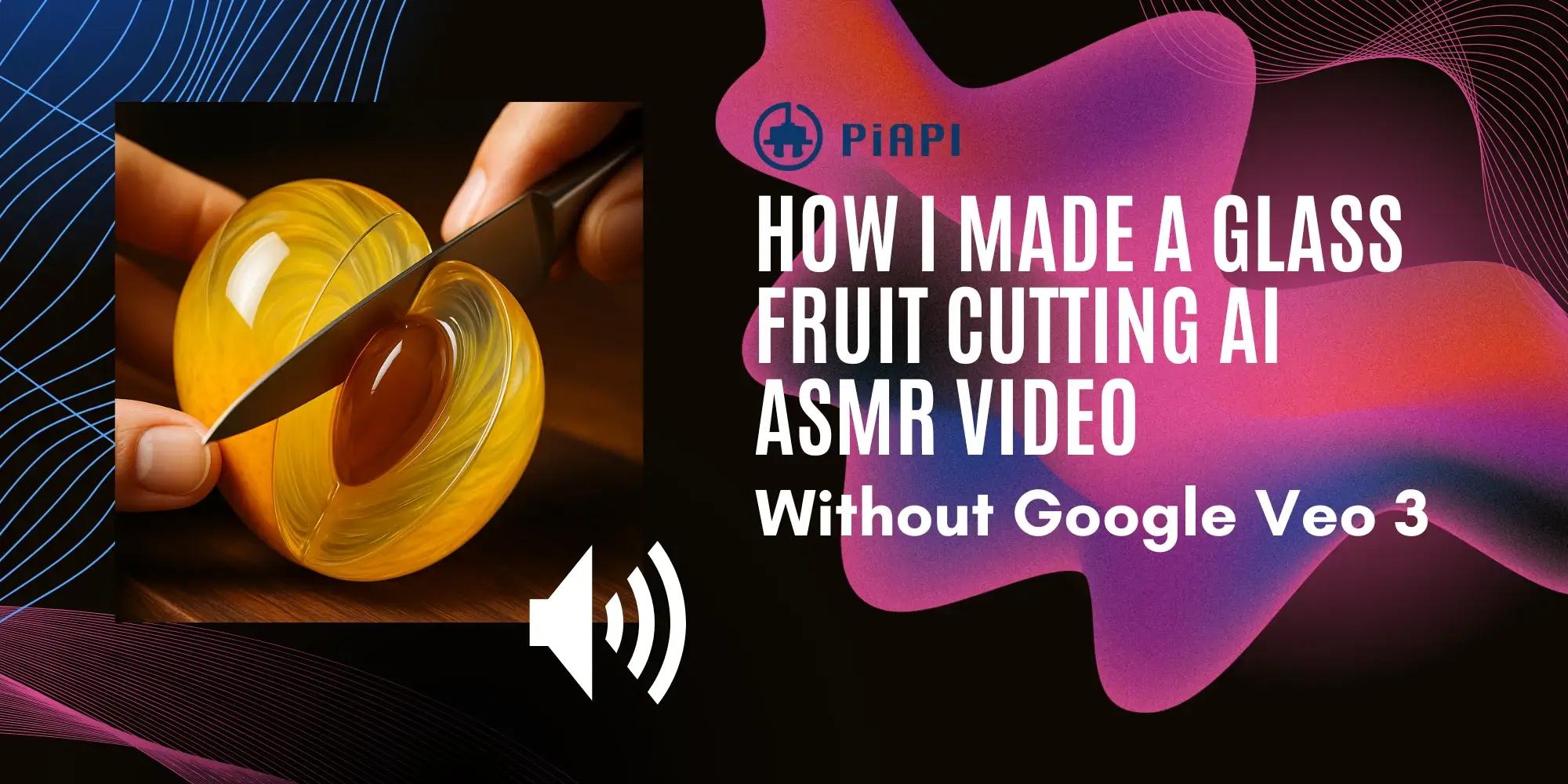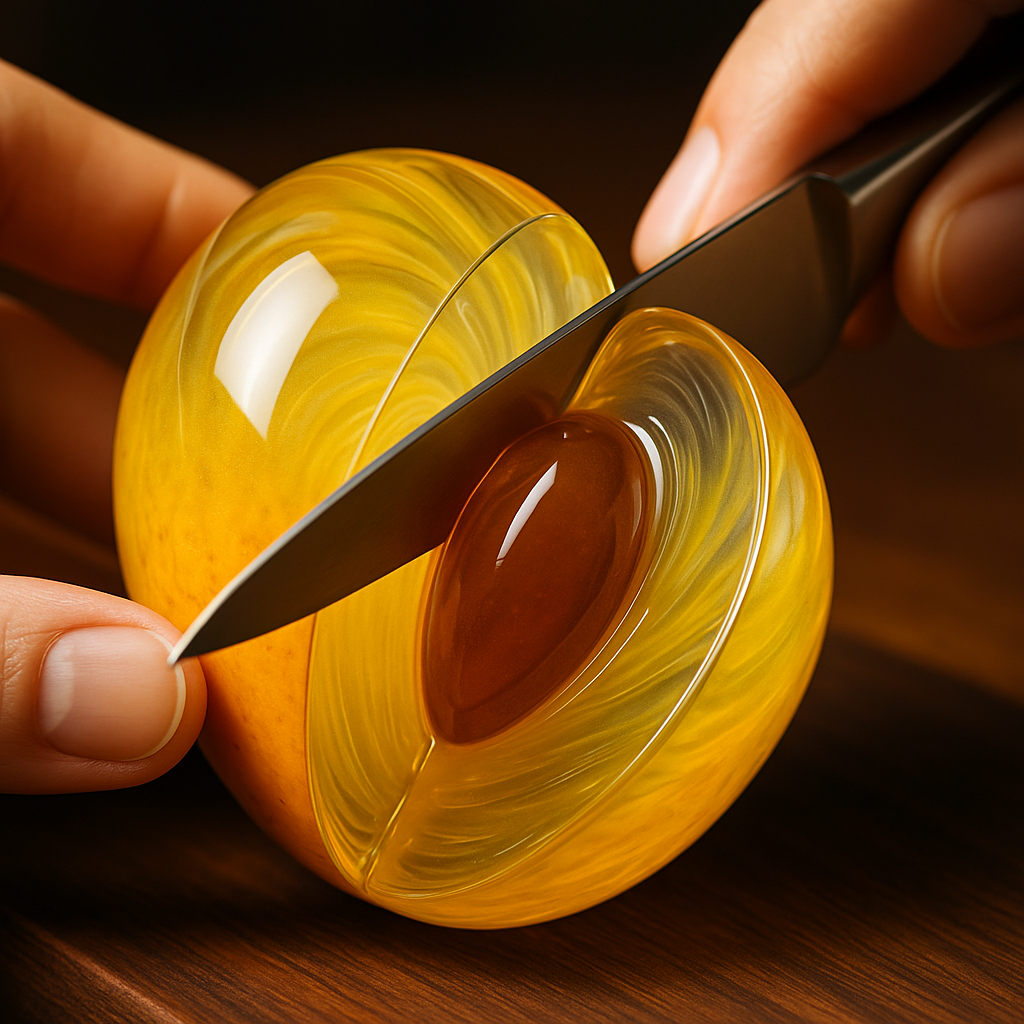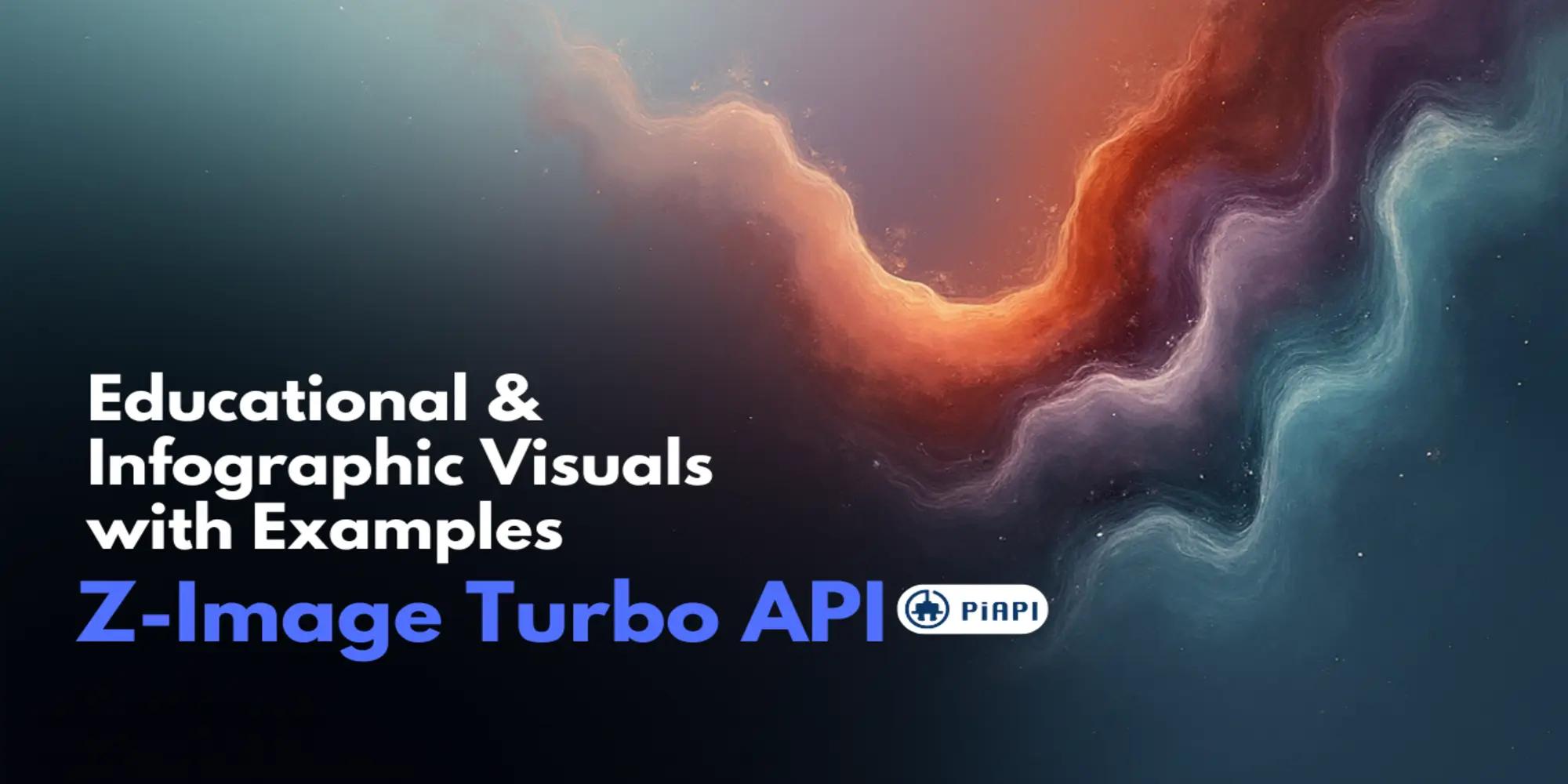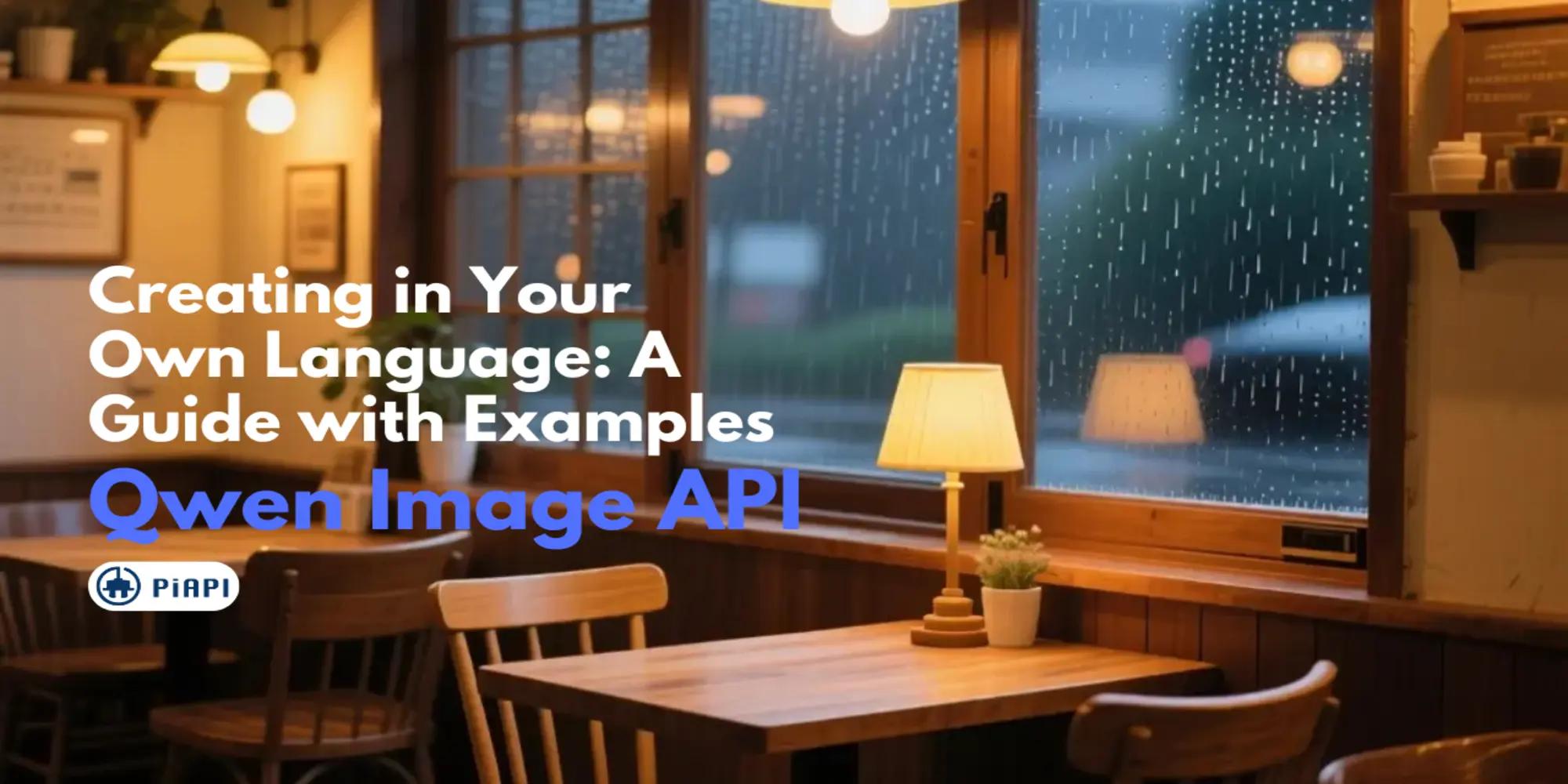Glass Fruit Cutting ASMR AI Prompt (How I Made a Video Without Google Veo 3)

Try These Glass Fruit Cutting ASMR Prompts
The satisfying slice. The crystal-clear crunch. The shimmering slide of a mango half in slow motion.
If you’ve been down the ASMR fruit cutting rabbit hole, you’ve probably seen the viral glass fruit cutting trend. In this guide, I’ll show you the exact prompt I used to create a glass fruit cutting AI ASMR video — without Google Veo 3.
We’ll walk through the prompt, step-by-step workflow, and tips so you can generate your own satisfying AI ASMR videos using Kling AI, ChatGPT image generation, and MMAudio — all accessed via PiAPI, your one-stop API for premium AI tools across video, image, audio, and more.
The Exact Prompt for Glass Fruit Cutting ASMR (Copy & Paste)
Here's the =proven prompts= I used — just copy, paste, and run it inside PiAPI’s GPT-4o image model:
A close-up photo of a realistic human hand slicing through a translucent glass mango with a sharp knife. The mango is semi-transparent with a shiny, glass-like surface and a visible seed inside. The lighting is soft and cinematic, highlighting the glossy textures. The background is minimal and wooden, like a kitchen cutting board. The composition feels satisfying and ASMR-friendly, with high realism and detail.
Swap “mango” with peach, watermelon, kiwi, or orange to create your own variations.
Step-by-Step: How I Generated the Video Without Veo 3

Step 1: Create the Base Image
You can start by crafting a prompt through ChatGPT.
- i. Open the LLM workspace on PiAPI
- ii. Select the
gpt-4o-imagemodel - iii. Submit this prompt:
A close-up photo of a realistic human hand slicing through a translucent glass mango with a sharp knife. The mango is semi-transparent with a shiny, glass-like surface and a visible seed inside. The lighting is soft and cinematic, highlighting the glossy textures. The background is minimal and wooden, like a kitchen cutting board. The composition feels satisfying and ASMR-friendly, with high realism and detail.
- iv. Once the image is generated, download it for the next step
Step 2: Animate with Kling AI via PiAPI
Now that you have your image, it’s time to bring it to life:
- i. Upload your glass fruit image into PiAPI's Kling AI
- ii. Use this animation prompt:
A close-up, slow-motion video of a human hand gently slicing all the way through a translucent glass mango with a shiny steel knife. The mango has a glossy, semi-transparent surface, and reveals a smooth glass-like seed inside. As the knife completes the cut, one half of the mango slowly slides and falls onto a wooden cutting board with a soft, satisfying sound. The scene is calming and tactile, with warm ambient light reflecting off the glass texture. Macro lens, high-detail realism, ultra-satisfying ASMR style, no background distractions, peaceful tone.
- iii. Run and download the AI-generated clip
You’ll get a clean, cinematic ASMR-ready animation that perfectly visualizes the sensation of cutting through a glass fruit.
Step 3: Add ASMR Audio with MMAudio
Next, I used our MMAudio to generate sound that matched the visuals.
- i. Open the MMAudio workspace and select the "
video2audio" task type - iii. Upload the video from Step 2
- iv. Enter the following prompt:
Ultra-clean ASMR audio of cutting a translucent glass mango in close-up. The track begins in near-silence, capturing delicate hand movements and a soft fingertip press against the smooth glass surface. A stainless steel knife gently touches the glass fruit — a crisp, high-pitched tap echoes subtly. As the knife slices slowly through, capture soft, satisfying friction: shimmering, crystalline textures, like tempered glass parting with fine internal tension. Include delicate creaking and micro-crackling as the blade glides through the semi-hollow fruit. Reveal a realistic inner mango seed made of frosted glass with natural, grainy striations — enhance the textural audio of the seed being exposed. End with a soft clink as the sliced half lands gently on a wooden cutting board. No background noise, no music — just pure, intimate, tactile glass ASMR.
The result? Pure, crisp ASMR audio that matches every movement in the cut.
Variations of the Glass Fruit ASMR Prompt
Try these variations to expand beyond mango:
- Glass Peach: “A slow-motion video of a crystal-clear knife cutting a glass peach in half on a wooden board.”
- Glass Watermelon: “Macro shot of a glass watermelon sliced, reflective seed patterns visible, cinematic shadows.”
- Glass Kiwi: “Cinematic ASMR of slicing a glass kiwi — soft crunch, visible frosted core.”
- Glass Orange: “Realistic ASMR video of slicing a glass-like orange, shimmering surface, satisfying resistance.”
Pro tip: Add “macro lens” or “slow-motion” for extra realism.
Why I Used PiAPI Instead of Google Veo 3
Google Veo 3 is impressive, but PiAPI gave me more flexibility:
- i. Use Kling AI for ultra-realistic, cinematic video generation
- ii. Generate crisp imagery with GPT-4o image tools tools
- iii. Design satisfying ASMR audio with MMAudio
- iv. One subscription without juggling multiple vendors
With PiAPI, I only paid for what I needed — perfect for experimenting with ASMR projects.

Find out more about Veo 3's pricing and features here, and PiAPI's here.
FAQs: AI ASMR Video Prompts
What is the best AI prompt for fruit cutting ASMR videos?
Use detailed prompts like “A close-up video of slicing a translucent glass mango, cinematic slow motion, ASMR style.” Adjust fruit type for variations.
Can you make glass fruit cutting ASMR without Google Veo 3?
Yes. Using PiAPI, you can combine Kling AI (video), GPT-4o image (stills), and MMAudio (sound).
How do AI ASMR prompts work?
Prompts describe visual and auditory details. The more tactile, textural, and cinematic your description, the more satisfying the AI output.
Final Thoughts
Whether you’re chasing viral TikToks, YouTube Shorts, or personal ASMR experiments, the glass fruit cutting AI prompt is a must-try. Plans start as low as $15/month with usage credits. PiAPI gives you one portal to rule them all. Explore our plans and try out our free features here!
With PiAPI, you can generate images, video, and audio all in one place — no Veo 3 required.
Try the prompt now in the Kling AI Playground on PiAPI.


